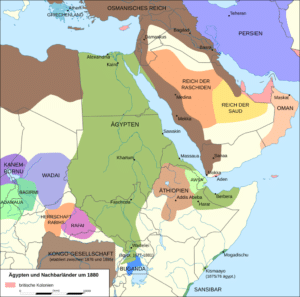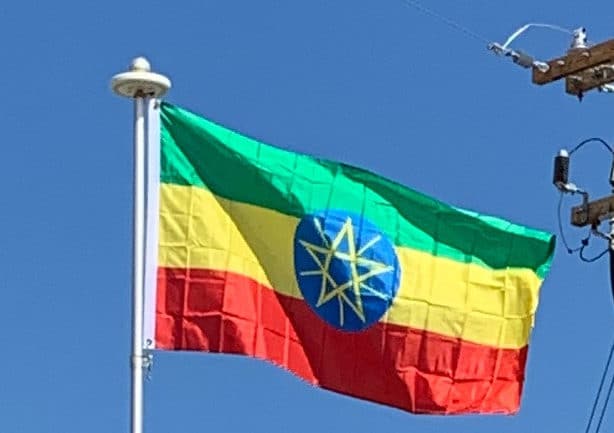
Muhammad’s second interaction with Ethiopia was during the Expedition of Zaid ibn Haritha, when he sent Amr bin Umayyah al-Damri to the King of Ethiopia (then Abyssinia).
Middle Ages:
The Zagwe dynasty ruled many parts of present-day Ethiopia and Eritrea between the early 12th and late 13th century. The name of the dynasty is derived from the Cushitic-speaking Agaw of northern Ethiopia. From 1270 AD until the Zemene Mesafint (Age of Princes), the Solomonic dynasty governed the Ethiopian Empire.
In the early 15th century, Ethiopia sought to make diplomatic contact with European kingdoms for the first time since the Aksumite era. A letter from Henry IV of England to the Emperor of Abyssinia survives. In 1428, Yeshaq I sent two emissaries to Alfonso V of Aragon, who sent return emissaries. They failed to complete the return trip. The first continuous relations with a European country began in 1508 with Portugal under Dawit II (Lebna Dengel), who had just inherited the throne from his father.

This proved to be an important development, for when the Empire was subjected to the attacks of the Adal Sultanate’s general and imam, Ahmad ibn Ibrahim al-Ghazi (called “Grañ ” “the Left-handed”), Portugal assisted the Ethiopian emperor by sending weapons and four hundred men, who helped his son Gelawdewos defeat Ahmad and re-establish his rule. This Abyssinian–Adal War was also one of the first proxy wars in the region, as the Ottoman Empire and Portugal took sides in the conflict. When Emperor Susenyos I converted to Roman Catholicism in 1624, years of revolt and civil unrest followed, resulting in thousands of deaths. The Jesuit missionaries had offended the Ethiopian Orthodox Tewahedo faith of the local Ethiopians.

In June 1632, Fasilides, Susenyos’ son, declared the state religion again to be the Ethiopian Orthodoxy. He expelled the Jesuit missionaries and other Europeans.
Aussa Sultanate:
The Sultanate of Aussa or “Afar Sultanate” succeeded the earlier Imamate of Aussa. The latter polity had come into existence in 1577 when Muhammed Jasa moved his capital from Harar to Aussa (Asaita) with the split of the Adal Sultanate into the Sultanate of Aussa and the Sultanate of Harar. At some point after 1672, the Sultanate of Aussa declined and temporarily came to an end in conjunction with Imam Umar Din bin Adam’s recorded ascension to the throne.

The Sultanate was subsequently re-established by Kedafu around the year 1734. It was thereafter ruled by his Mudaito Dynasty. The primary symbol of the Sultan was a silver baton, which was considered to have magical properties.
Zemene Mesafint:
Between 1755 and 1855, Ethiopia experienced a period of isolation referred to as the Zemene Mesafint or “Age of Princes”. The Emperors became figureheads, controlled by regional lords and noblemen like Ras Mikael Sehul of Tigray, Ras Wolde Selassie of Tigray, and by the Were ShehYejju Oromo dynasty, such as Ras Gugsa of Yejju. Prior to the Zemene Mesafint, King Iyoas had introduced Oromo as the language of the court from Amharic to Afaan Oromo.
